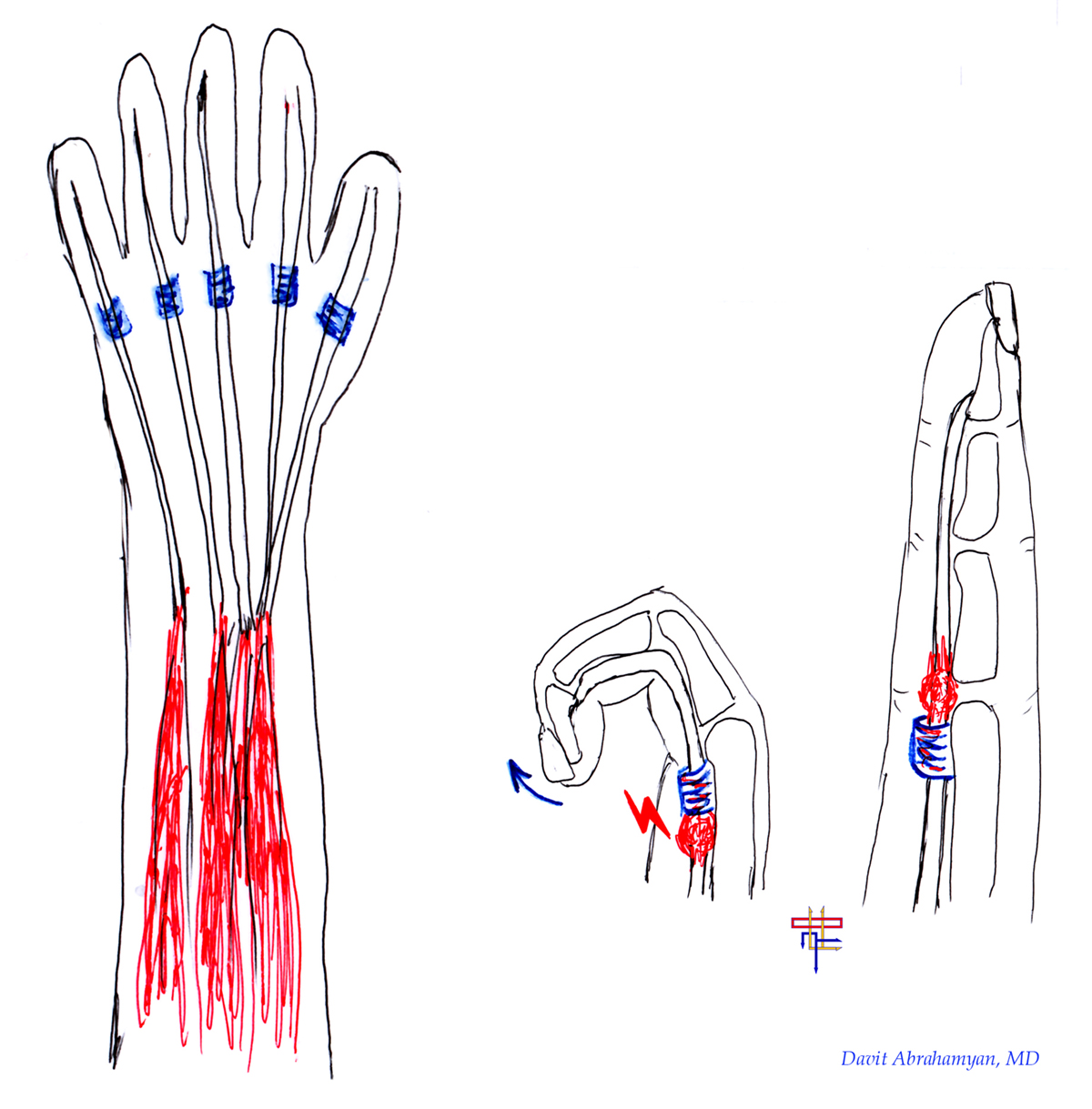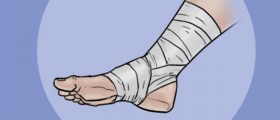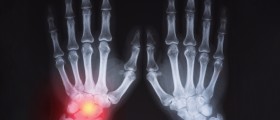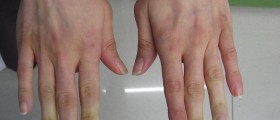
The problem with trigger finger happens when the finger, during finger movement, catches in a bent position. The following text will talk about this problem in detail. The problem whose name is self-explanatory, occurs when we try to grip something or close the fist, but it can also happen in different situations. It can occur when we are opening the fist. The people with this problem experience pain and hear clicking sound when they try to open or close the fist. Normally, the opening and closing would be smooth and should not cause any pain. The fingers can be stuck in one position, motionless, but this happens in most serious cases. The problems that the trigger finger produces usually affect the index and ring finger, but it can also cause problems for the thumb. Mostly, only one finger is affected but sometimes it can affect the several fingers.
Causes
Tendons connect muscles and the bones of the fingers. They are inelastic tissues that are located in the fingers and they connect bones of the finger with the forearm muscles. The bending of the fingers is made possible with the help of these tendons. Tendon sheaths are tubes that are found around the tendons, and they are responsible for creation of tensoynovium, which is responsible for lubricating the tendon. With the effect of this lubricant, the movement is smooth and the fingers easily can be straightened or closed. The problem we are talking about in this text occurs when the tendons become scarred, inflamed or irritated. There is no lubrication and this causes the sound we have mentioned. This can also lead to the narrowing of the tendon sheaths. Many causes cab take blame for the creation of trigger finger. Some of them are diabetes, gout, rheumatoid arthritis and several inflammatory diseases. This problem, which is seen mostly among women between 40 and 60 years of age, can be caused by some infection, amyloidosis or hypothyroidism.
Symptoms and Treatment
The problem of trigger finger begins with soreness at the base of the finger, which turns into the locking and pain. The finger may become locked and it has to be gently straightened with the help of another hand. In severe cases, the finger will not be able to move. Other symptoms are finger lumps, swelling, stiffness, tenderness and discomfort in the finger. Rest, exercises and massage are used for treating the problem, if the problem is mild. In some more serious cases, splint is necessary for six weeks. NSAIDs or steroids are given to those with severe case of trigger finger. Also percutaneous trigger finger release is an option for these cases. Needle is used during this procedure to insert anesthesia and release the finger. Surgery may be needed for the most severe cases.








-vs-Trigger-Points-(Myofascial-Pain-Syndrome)_f_280x120.jpg)








Your thoughts on this
Loading...